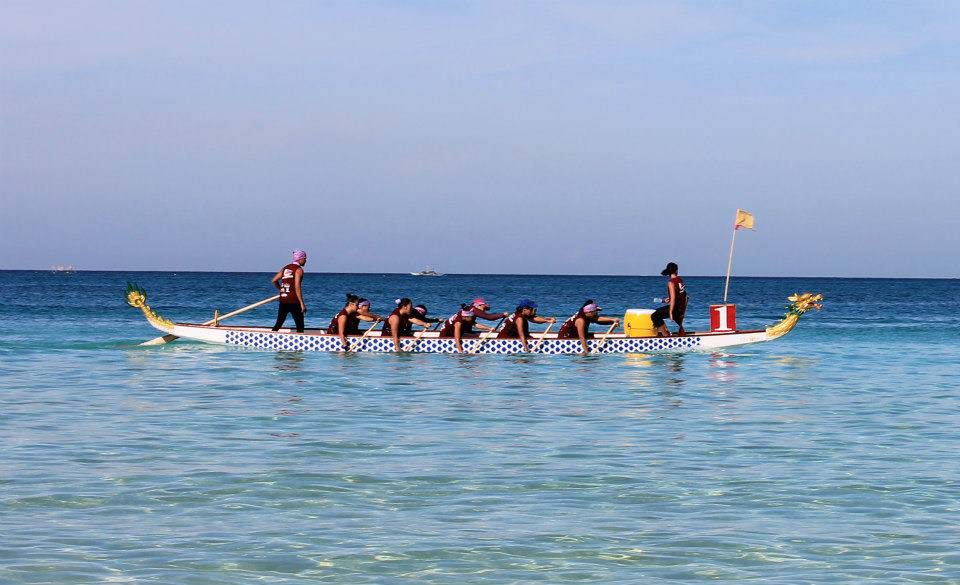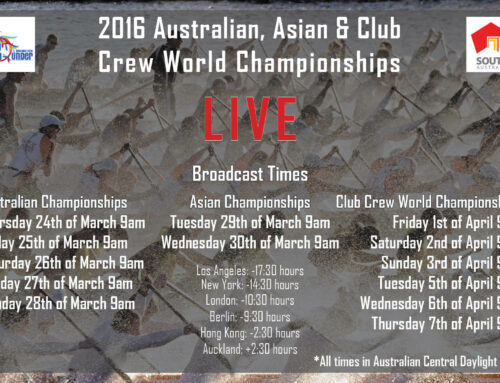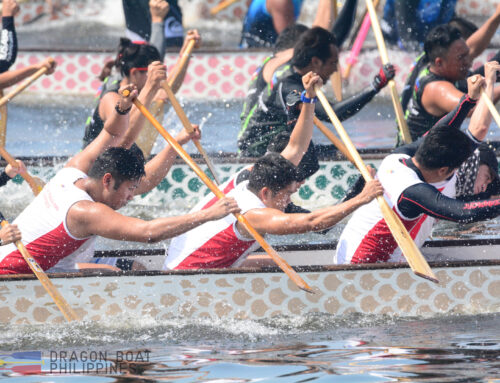Now that dragon boat has entered the mainstream Filipino public’s consciousness, a lot of you might be wondering, “That’s great and all, but how do I even start?” While it’s true that dragon boat training requires a bit more effort from the beginner than registering for a Fun Run, the benefits of getting into this hardcore Asian sport are worth it. Here is a list of FAQs that we’ve answered for you, the aspiring paddler.
I’m not sporty/thin/muscular enough. Can I still try dragon boat?
Of course! Like any other sport, dragon boat has a learning curve and demands a certain level of endurance that might prove challenging for the first-timer, but paddling skills are developed with consistent training. There is no cut-off for the age, weight and skill level at which you can start dragon boating. It’s like weight training: the more you practice, the more power you’ll be able to exert in time (in this case, to propel the boat forward).
But what if I don’t know how to swim?
Yun lang. Capsizing is a real hazard in this sport, so paddlers are advised to know how to swim, even if you can wear a flotation vest while paddling. That said, paddlers who don’t know how to swim aren’t uncommon, so dragon boat can be an opportunity to develop your confidence in the water. (If you live in an archipelago like the Philippines, swimming is an important life skill!)
What can I expect from dragon boat training?
A typical training session lasts from one to a couple of hours, including warm-up drills on land before getting into the boat. Expect to get up before the crack of dawn, as this is when most teams set their practice schedules to accommodate students and yuppies. Just think of it as a reversal of after-school or work activities, where fun comes before work.
Once you’re in the water, you’ll be taught a precise set of movements, from the proper way to hold your paddle to the actual motion of paddling in the water. Paddling techniques might differ from team to team, but here’s a hint: the power of your stroke (the term for paddling action) usually shouldn’t come from your arms, but from your core.
Precision is actually a key word in dragon boat paddling, since synchronicity, or pagsasabay, is the first thing all paddlers should master. The glide and speed of your boat largely depend on how synchronized the entire boat’s movements are. A single out-of-sync paddler can compromise an entire race. Besides synchronicity, training programs are usually focused on developing either power (for example, members might take turns paddling individually in a full boat, with the goal of covering as much distance as they can by themselves) or endurance (e.g., continuous paddling for several minutes).
Most teams supplement boat training with the usual methods, like jogging and weights. The important thing is to commit to the training program your coach has set for you.
How is dragon boat going to help me get fit?
Dragon boat combines an intense strength and cardio workout with the camaraderie of a team setting. You’ll get stronger and have more endurance for other activities, and it’s common for paddlers to branch out into other sports as a result of this newfound strength. Another benefit is the endorphin rush that fuels paddlers for the day ahead—after the initial adjustment to the early training schedule, you’ll find that you have a lot more energy and better sleeping habits.
There’s no shame in admitting that a lot of people initially get into sports and fitness regimens for the aesthetic benefits, like weight loss and “toning”. Consistent dragon boat training definitely delivers on those aspects (along with proper eating habits, of course). However, the longer you’re in dragon boat, the more you’ll value your strength and your body’s capabilities over concerns like, “Am I sexy enough?” You’ll notice paddlers of all shapes and sizes, and the ones who don’t fit typical standards of what fitness should look like are usually those who might surprise you with their tremendous power, which becomes more impressive the stronger and more competitive you get. In a nutshell, dragon boat fosters a body-positive attitude.
At the risk of sounding sexist, some women might be concerned that dragon boat will make them “too bulky”. As any legitimate sports scientist will attest, women do not produce the same amount of testosterone as men, so any concerns about developing a “mannish” build because of a normal fitness regimen are based on misconceptions.
When can I start competing in races?
That depends on how committed you are to your team’s training program. Your coach determines who gets included in race line-ups, and training attendance is usually the most deciding factor.
But isn’t Manila Bay so kadiri?
Ay. Dragon boat, especially in Manila, isn’t for the maarte. We’re not going to lie, Manila Bay isn’t exactly the most pristine venue for training, but if you take the necessary hygienic precautions (e.g don’t paddle if you’re sick or if you have any open wounds, and always shower and gargle ASAP after training), you’re not going to die.
Besides, training in Manila Bay is well worth it when it means opportunities to travel and paddle elsewhere, like:

Boracay Island, Philippines (Photo: Mark Lester Mandigal)

Teluk Bahang Dam, Penang, Malaysia (Photo: Patrick Ostrea)

Hong Kong, China (Photo: Victor Bautista)
Next week, we’ll start posting profiles of the various local club teams you can join. In the meantime, if you’re eager to start, most Philippine club teams have Facebook pages you can message to inquire about membership. Search the Philippine Canoe-Kayak Federation (PCKF) and the Philippine Dragon Boat Federation (PDBF) on Facebook to get an idea of which teams you might be able to join. See you on the boat!
(Photo credit for featured photo, top of the page: Sports Unlimited)







